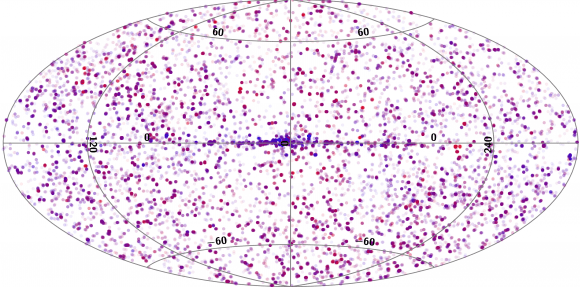Supermassive black holes likely are behind most of the nearly 100,000 new X-ray sources plotted by the Swift X-ray Telescope, according to findings led by the University of Leicester in the United Kingdom. The results came from poring over eight years of data produced by the Swift space observatory.
“Stars and galaxies emit X-rays because the electrons in them move at extremely high speeds, either because they are very hot (over a million degrees) or because extreme magnetic fields accelerate them. The underlying cause is usually gravity; gas can be compressed and heated as it falls on to black holes, neutron stars and white dwarfs or when trapped in the turbulent magnetic fields of stars like our Sun,” the university stated.
“Most of the newly discovered X-ray sources are expected to signal the presence of super-massive black holes in the centers of large galaxies many millions of light-years from earth, but the catalog also contains transient objects (short-lived bursts of X-ray emission) which may come from stellar flares or supernovae.”
The results were published in The Astrophysical Journal, which you can read here. You can also read the prepublished version on Arxiv.

Evans (University of Leicester)


I wonder how many of these x-ray sources are from Gravitars?